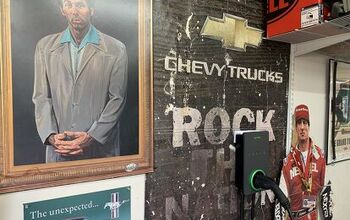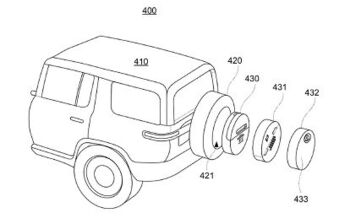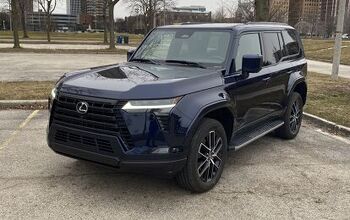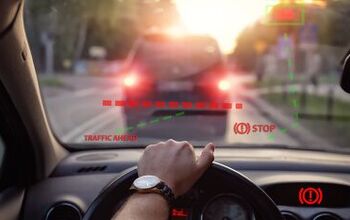Hacking Traffic Lights for Fun and Profit!

In a few weeks, at WOOT (the USENIX Workshop on Offensive Technologies — an academic conference where security researchers demonstrate broken stuff), a team from the University of Michigan will be presenting a lovely paper, Green Lights Forever: Analyzing the Security of Traffic Infrastructure. It’s a short and fun read. In summary, it’s common for traffic light controllers to speak to each other over a 5.8GHz wireless channel (much like WiFi, but a dedicated frequency) with no cryptography, default usernames and passwords, and well-known and exploitable bugs. Oh boy. And what can we do with that?
We want our traffic lights to coordinate with one another. This streamlines the flow of traffic. If an attacker can mess with that coordination in an arbitrary fashion, then they can for example ensure they always have green lights. They can ensure others don’t. The opportunities for mayhem may seemingly allow your imagination to wander to the low point of Bruce Willis’s career: Live Free or Die Hard, wherein cyber-baddies redirected traffic in a vain attempt to squish our action hero. In reality, probably not. One of the curious things about the computer design for traffic light controllers is that there are really two computers stacked one atop the other. The “MMU” computer has a bunch of basic rules it has to enforce (e.g., minimum duration of yellow lights) and if the fancy controller tries to create panic at the disco, the MMU says “umm, no” and goes into flashing red, requiring somebody to manually come out and reset it. Which is to say, an attacker who wants to do more than a little tweaking here and there is likely to just dump all the lights into blinking-red mode and just piss everybody off.
So… I’m sure you’ve got questions. Let me see if I can anticipate them and act like I know what I’m talking about:
How hard is it to pull this off? Surprisingly easy. About the only thing that’s non-trivial is getting hold of the proper radio hardware, and that’s a pretty low bar.
How hard is it to fix this? Harder than you’d think. These radios do support WPA2 (the same crypto standard used to protect WiFi networks), and cities could deploy it. They’d inevitably end up using the same key material everywhere, but that’s certainly better than doing everything in the clear. More importantly, these signal lights were never really engineered to be easy to apply software updates, unlike your smartphone or something that happily updates itself in the background. This means that latent bugs can be more easily found and exploited, simply by rummaging around in the list of bugs fixed in newer versions of the system.
Come on, nobody’s going to really do this. Sure, you go ahead and believe that, but wouldn’t you like to know that somebody can’t just arbitrarily screw with traffic? I can think of all sorts of nefarious reasons why an attacker might be financially incentivized to create carefully chosen local traffic jams.
This kind of information is too dangerous to be out in public! Whoa there. Just because it’s new to you doesn’t mean it’s new to the nefarious sorts. Sometimes, a little bit of public pressure is a very good thing to push vendors to fix their products and push customers to adopt the fixes. (There’s also an analogy here to the argument that gun control only limits the good guys’ guns. That particular argument is generally stronger when we’re talking about cyber weapons versus the traditional kinetic variety.)
Gosh, what would happen if future traffic light controllers didn’t have the MMU contraption? Arguably the MMU saved their bacon. Otherwise, the U. Michigan team would have been able to do much nastier things. Also, if we ever get autonomous intersections (great work from UT Austin, by the way), where self-driving robo-cars are negotiating their paths well in advance, getting rid of traditional stop lights altogether, then the security vulnerabilities would be a much, much more serious concern. Just watch the video below and cringe a bit.

More by Dan Wallach
Latest Car Reviews
Read moreLatest Product Reviews
Read moreRecent Comments
- VoGhost "compliance EVs" - so typically Posky. Come on, Matt, come clean about what Big Oil is paying you already.
- VoGhost Great to see leadership from Washington in supporting American businesses and job creation.
- VoGhost Oh, Mattie, I am BEGGING you to take a course in economics. There's probably a community college near you offering courses for free or very cheap. Seriously, people this ignorant of basic economics really should not be writing this drivel. Stick to what you know: pimping for big oil.
- 2manyvettes I was a computer instructor in a local technical college for some years teaching Windows OS and Micosoft Office. Not long before I retired I purchased a Mac Book Air laptop. It didn't take me long to learn the Apple OS and the first thing I learned was the lousy job Microsoft did ripping off the Apple software. I purchased Microsoft Office for Apple at the time and discovered when Apple upgraded the OS to 64 bit and my 32 bit Office software would no longer run on the laptop, that embedded in the Apple OS was software that could open any Office file and could save any file in Microsoft file format. I have always felt if Apple sold product at PC prices they would put Microsoft out of business. Oh, and I bought my Mac ten years ago and still runs like brand new. Effect on Rivian? Who knows? Based on my experience with their technology, it could be interesting.
- Spectator This was an amazing vehicle. Back then Acura knew how to make a plush and comfy seat!


































Comments
Join the conversation
Huh. Suddenly I have an itch to go buy stuff at RadioShack and I don't know why...
The problem is real, but the solution is relatively cheap and simple: the controller designs are ancient and should have been upgraded ages ago, but weren't because the issue isn't sexy enough for bureaucrats and lawmakers. From what I've seen, when lawmakers DO get involved, the problem gets worse before it gets better. It's amazing how scientifically and technically illiterate our elected officials are. They're fiscally incompetent too, and that's actually part of their jobs. Expect a high profile crisis, probably terrorist-inspired (but not terrorist created) and the solution installed quickly, with federal funding and a bunch of new laws for Homeland Security to oversee, with stiff penalties.